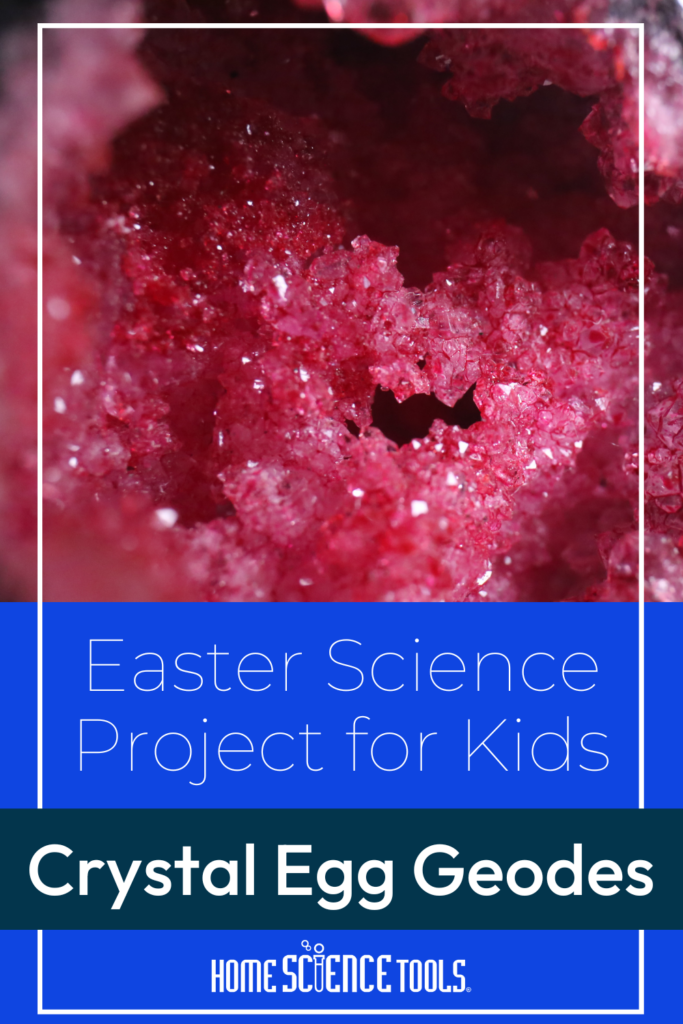Did you know you can make a crystal eggshell geode using science? For this project you’ll need to start by making a supersaturated solution (steps 5-6). For our geodes, we used magnesium sulfate and aluminum potassium sulfate.
What You Need:
- Raw eggs
- Water
- Food coloring
- 250 ml beakers
- Funnel (optional)
- Plastic cups
- Epsom salt (magnesium sulfate), alum (aluminum potassium sulfate) or other solids commonly used to grow crystals, like Borax (sodium tetraborate), copper sulfate, etc.)
- White school glue and paint brush (for alum crystal geodes only)
How to make your crystal eggshell geode:
- Crack the eggs close to the top of the narrow end. Remove yolk and white.
- Carefully place eggshell under warm running water and peel the membrane from the shell. Be very gentle! This part is tricky and requires much delicacy to avoid breaking the fragile eggshells.
- Once the membrane is removed and the eggshells are rinsed, invert them on a paper towel to dry.
- For alum crystal geodes, paint the inside of the shell with white glue. Then sprinkle with alum powder, and let dry.
- To make supersaturated solution, use your microwave to heat 100 ml of water in a 200 ml beaker just until boiling. Remove the beaker using hot pads or heat-resistant leather gloves.
- Stir in your solid (Epsom salt, alum, etc.), one spoonful at a time. Your solution should be clear. Heat it up more if all the solid won’t dissolve.
- Add food coloring, and let cool for about 10 minutes.
- Carefully submerge the eggshell. Or set it in a clean empty cup and use the funnel to fill it with the supersaturated solution.
- Leave the eggshell and supersaturated solution undisturbed for several days or longer.
- After a few days, you should start to see crystals forming inside your eggshell. Use a spoon to remove it from the solution, or carefully pour the supersaturated solution out of the eggshell.
What Happened:
A crystal is a hard, solid substance made of molecules that bond together in specific patterns to form a shape with straight edges and flat surfaces. If you made more than one type of crystal eggshell geode, you saw that not all crystals have the same shape or size. The site where a crystal begins to grow, called its nucleation site, determines its size: fewer nucleation sites mean larger crystals, and many nucleation sites produce smaller crystals.
A few molecules of magnesium sulfate or aluminum potassium sulfate (or whatever solid you used) found each other in the solution and joined together in a crystal formation. More molecules joined until enough gathered to form a visible crystalline solid. Chemists refer to this as a crystal ‘falling out of’ the solution. If you left these crystals in the solution, they’d continue to grow.
More Crystal Projects:






